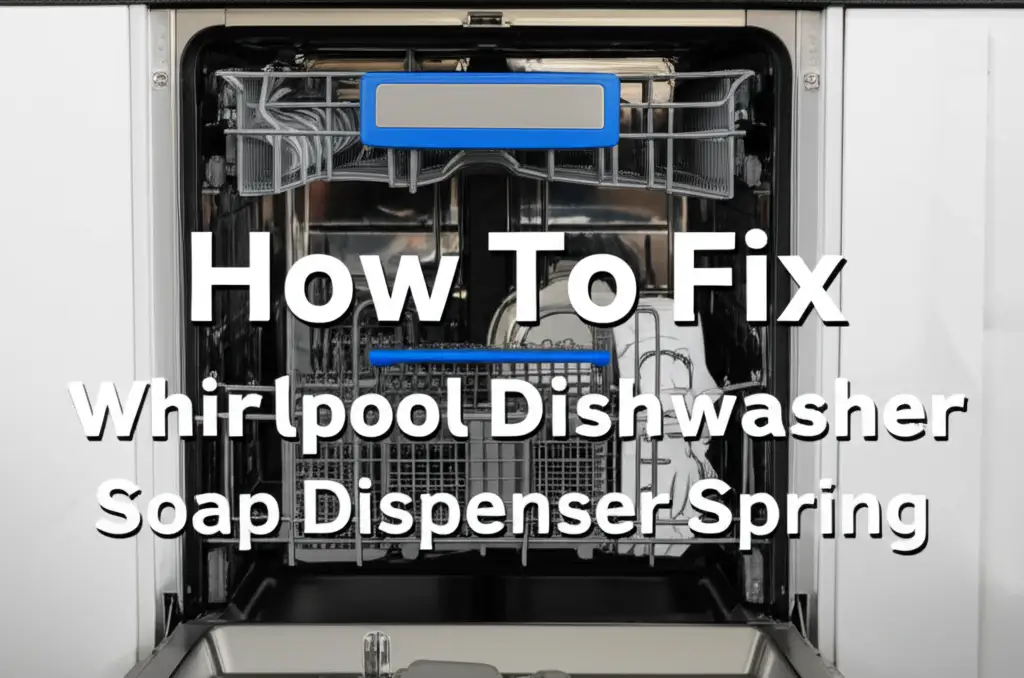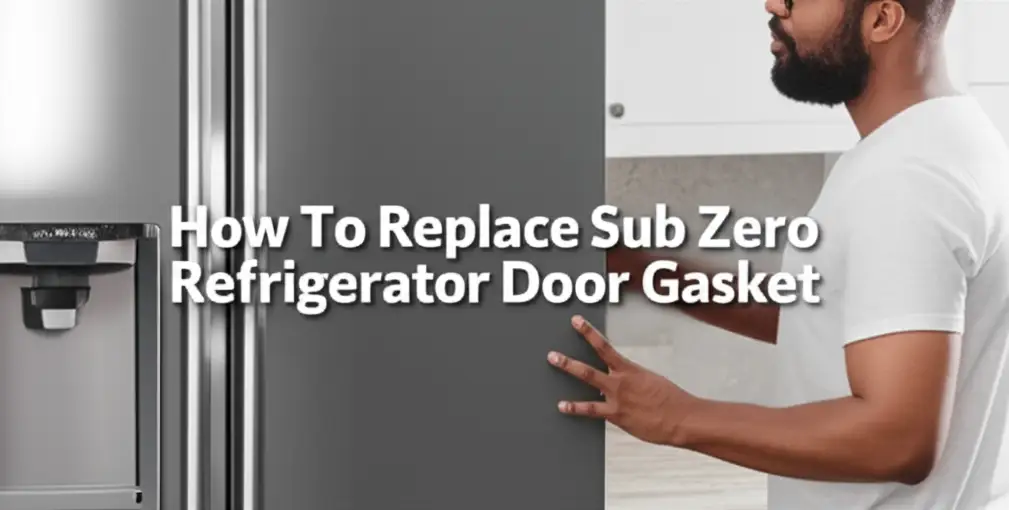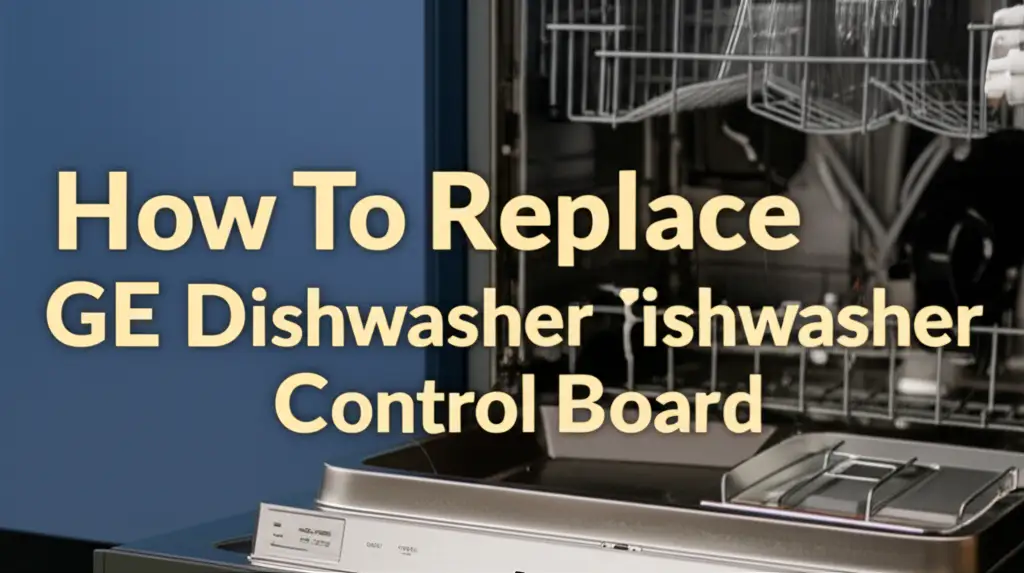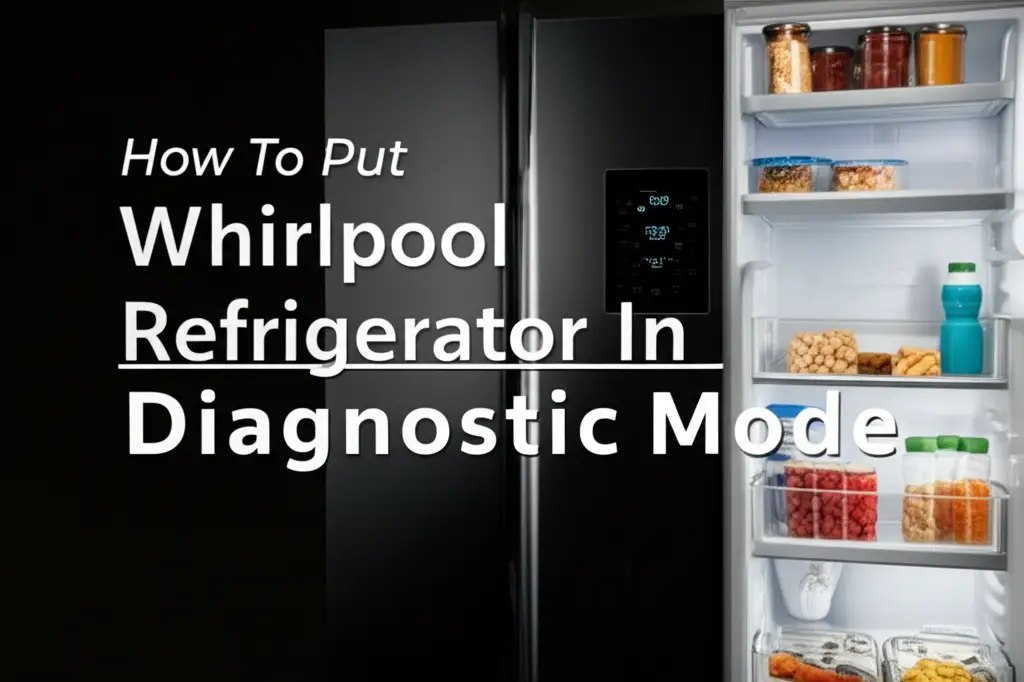· Todd Martin · Appliance Repair · 17 min read
How To Fix Whirlpool Dishwasher Soap Dispenser Spring

How To Fix Your Whirlpool Dishwasher Soap Dispenser Spring
Has your Whirlpool dishwasher started leaving dishes dirty? A common culprit is a faulty soap dispenser. When the dispenser door fails to open, your dishes just won’t get clean. The good news is, often, the issue traces back to a small, crucial part: the soap dispenser spring.
I understand how frustrating it is when appliances do not work correctly. Fixing this problem yourself saves time and money. This guide will walk you through the process step-by-step. We will cover diagnosing the issue, gathering the right tools, and safely replacing the spring. By the end, your Whirlpool dishwasher will likely dispense soap perfectly again.
Takeaway
- Diagnose the Issue: Check if the dispenser door opens manually and if the spring is visibly broken or missing.
- Gather Tools: You will need screwdrivers, needle-nose pliers, a new dispenser spring, and potentially a multimeter.
- Prioritize Safety: Always disconnect power before starting any repair.
- Follow Steps: Carefully remove the dispenser, replace the old spring, and reassemble.
- Test and Maintain: Run a test cycle and consider regular cleaning to prevent future issues.
Clear, Concise Answer
To fix a Whirlpool dishwasher soap dispenser spring, first disconnect power to the dishwasher. Access the dispenser assembly, usually by removing the inner door panel. Carefully detach the old spring and install a new, compatible spring. Reassemble the dishwasher door, restore power, and test the dispenser.
Understanding Your Whirlpool Dishwasher Dispenser
Dishwasher soap dispensers are simple but vital components. They hold detergent until the right moment in the wash cycle. Then, they release it to clean your dishes. A small spring powers the door mechanism. This spring helps the door pop open when commanded.
The dispenser uses a latch system. An electrical solenoid often controls this latch. When the cycle reaches the soap dispensing stage, the solenoid activates. It pulls the latch open. This action allows the spring to push the door open. Your detergent then falls into the wash tub.
Over time, this small spring can weaken or break. Regular use puts stress on the spring. Harsh detergents or excessive heat can also contribute to its wear. When the spring fails, the door remains shut. This means no soap gets released. Your dishes come out dirty, regardless of the cycle.
Understanding how this mechanism works helps in troubleshooting. If the door does not open, the spring is a prime suspect. It is often a simpler fix than issues with the solenoid itself. We will focus on inspecting and replacing this crucial spring.
Diagnosing the Dishwasher Soap Dispenser Spring Issue
You must correctly identify the problem before starting any repair. Several issues can cause a soap dispenser door to stick or not open. It is important to rule out other problems first. We want to confirm the spring is the actual issue. Begin by observing your dishwasher’s behavior during a wash cycle.
First, load your dishwasher as usual. Add detergent to the dispenser. Close the door and start a regular wash cycle. Wait until the main wash phase should be active. Open the dishwasher door carefully. Check the dispenser. Is the door still closed? If it is, this confirms a dispensing problem.
Next, manually open the dispenser door. Does it feel loose or floppy? Does it open with little to no resistance? A healthy spring provides a firm, snappy open. If it feels weak, or if the door does not stay shut properly before the cycle, the spring is likely failing. Sometimes, you can even see a broken or detached spring. Look closely around the dispenser door hinge area.
If the door does not open, but you hear a click from the dispenser during the cycle, the solenoid might be working. This suggests the spring is the issue, not the electrical component. However, if there is no click or sound, the problem could be electrical. In that case, you might investigate issues like a faulty solenoid or wiring. For similar diagnostic steps on other brands, you can refer to how to fix Samsung dishwasher soap dispenser door latch or how to fix GE dishwasher soap dispenser door latch. Knowing the specific symptoms helps you proceed with confidence.
Sometimes, a build-up of soap residue can also jam the dispenser door. Try cleaning the dispenser thoroughly first. Use a warm, damp cloth to wipe away any gunk. Run a cycle with no dishes and a dishwasher cleaner. If cleaning does not help, then it is time to consider mechanical repair. A common problem is when the Whirlpool dishwasher soap dispenser is not opening. This guide directly addresses one of the primary reasons for that specific issue.
Essential Tools and Parts for Whirlpool Dispenser Repair
Preparing your workspace and gathering the right tools makes the repair process smooth. You do not want to stop halfway through to find a missing item. Most of these tools are common household items. You might already own them. However, a specific part for your Whirlpool dishwasher will be necessary.
First, you will need a set of screwdrivers. Both Phillips head and flathead screwdrivers are often required. Dishwasher door panels and dispenser assemblies use various screw types. A small Phillips head screwdriver is especially useful for the tiny screws inside the dispenser unit. Make sure your screwdrivers have comfortable grips. This helps with precision work.
Next, needle-nose pliers will be invaluable. These pliers help manipulate small parts. The spring itself is tiny and often tricky to grip. Needle-nose pliers allow you to grasp the spring securely. They also help in attaching it to its mounting points. A small pair of standard pliers might also be useful for bending or holding wires.
You will also need a new Whirlpool dishwasher soap dispenser spring. This is the most crucial part. Do not try to reuse a broken or weakened spring. It will only lead to repeated issues. You can usually find this part online by searching your dishwasher’s model number. Check appliance parts websites or the Whirlpool parts store. Ensure you get the exact spring designed for your specific model. Using an incorrect spring can cause further damage or improper operation.
Consider having a small container for screws. This prevents losing tiny fasteners during disassembly. A flashlight or headlamp can improve visibility inside the dishwasher door. This area can be dark. Gloves might also be helpful to protect your hands. This is especially true if you encounter sharp edges or old grease. Having these items ready beforehand saves time. It also ensures you complete the repair safely and efficiently.
Safety First: Preparing for Your Whirlpool Dishwasher Repair
Safety is paramount when working with any electrical appliance. Dishwashers involve both electricity and water. Ignoring safety precautions can lead to serious injury or damage. Always prioritize safety steps before starting any repair work. I cannot stress this enough: your safety comes first.
The very first step is to disconnect power to the dishwasher. Simply turning it off at the control panel is not enough. You must cut power at the source. Locate your home’s circuit breaker box. Find the breaker labeled for your kitchen or dishwasher. Flip the breaker to the “off” position. If your dishwasher is plugged into an outlet, unplug it from the wall. Confirm the power is off. You can use a non-contact voltage tester on the outlet, if accessible. This ensures no electricity reaches the appliance.
Next, you should turn off the water supply to the dishwasher. Look for the shut-off valve, usually under the kitchen sink. It connects to the dishwasher’s water inlet hose. Turn the valve clockwise until it is completely closed. This prevents any accidental water leaks during the repair. Even a small leak can cause significant damage.
It is also wise to prepare your workspace. Clear the area around the dishwasher. You will need room to maneuver the door. Lay down towels or old newspapers on the floor. This protects your flooring from any drips or debris. Have your tools organized and within reach. This minimizes distractions during the repair.
Wear appropriate personal protective equipment. Safety glasses protect your eyes from flying debris or unexpected splashes. Gloves can prevent cuts or scrapes from sharp edges. Some components inside a dishwasher can have sharp corners. Taking these simple safety measures ensures you can focus on the repair without worry. Always confirm power and water are off before touching any internal components.
Step-by-Step Guide: Accessing the Whirlpool Dispenser Door
Now that safety precautions are in place, we can begin. Accessing the soap dispenser spring requires removing the inner door panel. This process might seem daunting, but it is manageable. Take your time and follow each step carefully. I find it helpful to take pictures as I go.
First, open the dishwasher door fully. You will see screws lining the perimeter of the inner door panel. These screws secure the inner panel to the outer panel. Use your Phillips head screwdriver to remove all visible screws. Pay attention to any screws hidden under decorative trim or plastic caps. Place these screws in your designated container. This keeps them safe and organized. Losing even one small screw can make reassembly difficult.
Once all screws are removed, the inner door panel should separate from the outer panel. Sometimes, it might stick slightly due to seals or old residue. Gently pry it apart. Be careful not to bend or damage the panels. You might need to slightly lift the outer panel to clear the inner one. Some models have a small lip or groove. If the dishwasher door is balanced by springs, ensure it does not drop suddenly.
With the inner panel removed, the dispenser unit becomes visible. It is usually a self-contained plastic housing. You will see wires connected to it. These wires supply power to the solenoid and control the dispenser. You may also see water lines if your dispenser has a rinse aid compartment. Do not disconnect any wires unless absolutely necessary. We are focusing on the mechanical part of the dispenser.
Locate the soap dispenser unit itself. It is usually attached to the inner door panel. It might be secured by additional screws or plastic clips. Remove these fasteners. Carefully detach the dispenser unit from the door. You might need to gently pull it away from the panel. The dispenser unit should now be free. You can now access the spring mechanism more easily. Ensure you place the inner door panel and outer panel carefully aside. This prevents scratches or damage. This step makes replacing the Whirlpool dishwasher soap dispenser spring much simpler.
Replacing the Whirlpool Dishwasher Dispenser Spring
You have successfully accessed the dispenser unit. Now comes the main task: replacing the old spring. This part can be fiddly due to the small size of the spring. Patience is key here. Take your time and work precisely.
Carefully inspect the old spring. It is usually a tiny coil spring. It attaches to a small plastic lever on one end and a fixed point on the dispenser body on the other. Note how the old spring is oriented. This helps with installing the new one correctly. If the old spring is still partially attached, gently unhook it using your needle-nose pliers. If it is completely broken or missing, you will see the empty attachment points.
With the old spring removed, take your new Whirlpool dishwasher soap dispenser spring. Compare it to the old one if you still have pieces. Ensure it looks identical in size and tension. Using your needle-nose pliers, carefully hook one end of the new spring onto its designated attachment point on the dispenser body. This is often a small plastic peg or hole. It might be challenging to secure it.
Next, gently stretch the spring slightly and hook the other end onto the small plastic lever or arm. This lever is what the solenoid pulls to release the door. The spring provides the tension to snap the door open. You may need to apply slight pressure or stretch the spring with the pliers. Ensure both ends of the spring are securely seated. It should not be loose.
Once the spring is in place, test the dispenser door manually. It should now have good tension. The door should snap open firmly when you release the latch. If it feels weak or sluggish, double-check the spring’s installation. Make sure it is not kinked or misaligned. The door should also stay shut properly when closed. This ensures the soap does not fall out prematurely. Replacing the spring can also address issues like why your KitchenAid dishwasher soap dispenser is not opening, as the mechanism is similar across many brands. With the new spring in place, you are ready to reassemble the dishwasher.
Testing and Reassembling Your Whirlpool Dishwasher
You have installed the new spring. Now it is time to put everything back together. Reassembly is basically the reverse of disassembly. Be methodical and double-check each step. This ensures your dishwasher functions properly and safely.
First, reattach the soap dispenser unit to the inner door panel. Secure it with the screws or clips you removed earlier. Make sure it is seated firmly and does not wiggle. All connections should be snug. Double-check any wires you might have disconnected, though typically none are needed to be disconnected for a spring replacement.
Next, align the inner door panel with the outer door panel. This can be a bit tricky. Make sure the edges match up perfectly. The screws need to align with their respective holes. Carefully insert and tighten all the screws you removed from the door panel perimeter. Do not overtighten them, as this can strip the plastic or metal threads. Just make them snug. As you tighten, ensure the door panels pull together without gaps.
Once the door panels are securely reassembled, close the dishwasher door. It should close smoothly. The dispenser door should remain closed. Now, restore the water supply by turning the shut-off valve counter-clockwise. Check for any leaks around the water inlet hose. Address any leaks immediately before restoring power.
Finally, return to your circuit breaker box. Flip the dishwasher’s breaker back to the “on” position. Your dishwasher now has power again. The ultimate test is to run a short cycle. Place a small amount of detergent in the dispenser. Close the door and select a quick wash or rinse cycle. Listen for the sound of the dispenser door opening. After the cycle finishes, open the dishwasher. Check if the dispenser door is open and empty. If it is, congratulations! You have successfully fixed your Whirlpool dishwasher soap dispenser spring. This successful repair prevents further issues related to why your Whirlpool dishwasher soap dispenser is not opening and ensures your dishes get clean.
Maintenance Tips to Prevent Future Dispenser Spring Problems
Fixing your dispenser spring is a great achievement. However, preventing future issues is even better. Regular maintenance can extend the life of your dishwasher components. It keeps your appliance running efficiently. I have some simple tips that can make a big difference.
First, use the correct type and amount of dishwasher detergent. Only use automatic dishwasher detergent. Never use liquid dish soap. Liquid dish soap creates too many suds, causing floods and damaging the machine. Even small amounts can cause major problems. Refer to your dishwasher’s manual for recommended detergent types and dosages. Using too much detergent can lead to sticky residue. This residue can gum up the dispenser mechanism. It can make the door stick or put extra strain on the spring. If you’ve ever wondered about the right amount, read about how much dish soap can I use in the dishwasher. This helps prevent build-up on the dispenser.
Second, clean your dispenser regularly. Over time, detergent, rinse aid, and food particles can accumulate. This build-up can hinder the spring and latch mechanism. Use a damp cloth or a soft brush to wipe down the dispenser compartment. Pay attention to the door hinges and latch area. You can also run an empty wash cycle with a dishwasher cleaner. This helps dissolve any hidden grime. Do this once a month or every few months.
Third, avoid forcing the dispenser door open or closed. If it feels stiff, investigate the cause rather than applying excessive force. Forcing it can bend or break the delicate spring and latch. Check for obstructions or residue. A gentle touch goes a long way in appliance care.
Lastly, inspect your dishwasher periodically. While you do not need to disassemble it regularly, a quick visual check can help. Look for signs of wear on the dispenser door or around the hinge. Early detection of minor issues can prevent major breakdowns. These simple maintenance practices will keep your Whirlpool dishwasher soap dispenser spring working smoothly for years to come.
FAQ Section
Q1: How do I know if my Whirlpool dishwasher soap dispenser spring is broken? A1: You can often tell if the spring is broken if the dispenser door feels loose or floppy when opened manually. It might not snap open properly during a cycle. Sometimes, the door might not stay closed before the cycle starts. Visually inspecting the spring itself can also confirm if it is detached or broken.
Q2: Can I use a generic spring to replace the dispenser spring? A2: It is highly recommended to use an OEM (Original Equipment Manufacturer) or a compatible aftermarket spring specifically designed for your Whirlpool dishwasher model. Generic springs may not have the correct tension, size, or durability. An improper spring can lead to the door not opening fully or breaking again quickly.
Q3: Is it difficult to replace the soap dispenser spring myself? A3: Replacing the soap dispenser spring is considered a moderately easy DIY repair. It requires basic tools and a careful approach to disassembly and reassembly. The most challenging part is often removing the dishwasher door panels and working with the small spring. With patience and this guide, most homeowners can do it.
Q4: How long does it take to fix the Whirlpool dishwasher soap dispenser spring? A4: For an average DIYer, replacing the soap dispenser spring usually takes about 1 to 2 hours. This includes the time for diagnosis, gathering tools, disassembling the door, replacing the spring, and reassembling the dishwasher. Experienced individuals might complete it faster.
Q5: What if my dispenser still does not open after replacing the spring? A5: If the dispenser door still does not open after replacing the spring, the issue might be electrical. The solenoid that releases the latch could be faulty, or there could be a wiring problem. In this case, you might need to test the solenoid with a multimeter or call a professional appliance technician.
Q6: Can a broken dispenser spring affect dish cleaning performance? A6: Yes, absolutely. If the soap dispenser spring is broken, the dispenser door will not open during the wash cycle. This means the detergent will not be released into the water. As a result, your dishes will not get properly cleaned, often coming out with food residue or looking dull.
Conclusion
A malfunctioning soap dispenser can turn your Whirlpool dishwasher from a convenience into a frustration. Thankfully, a broken Whirlpool dishwasher soap dispenser spring is a common and often straightforward fix. By carefully following the steps outlined in this guide, you can diagnose the problem, gather the necessary tools, and replace the spring yourself. This empowers you to save money on repair costs.
I hope you feel confident tackling this repair. Remember to prioritize safety by disconnecting power and water before starting any work. Take your time during disassembly and reassembly. With the new spring in place, your dishwasher will once again release detergent at the perfect moment. This ensures spotless dishes with every wash. If you encounter any unexpected issues, consider consulting a professional. However, for many, this DIY repair will have your Whirlpool dishwasher back to its best performance in no time. Give it a try; you might surprise yourself with your DIY skills!
- Whirlpool Dishwasher Repair
- Soap Dispenser Fix
- Dishwasher Spring Replacement
- Appliance DIY
- Home Appliance Maintenance





